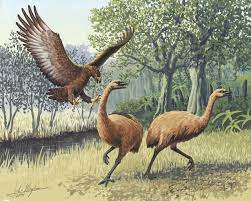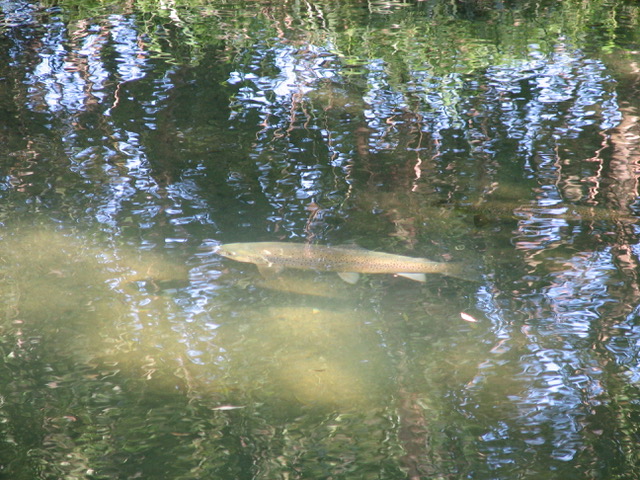A newspaper report in late January told of black-backed gulls behaving as predator to other native birds.So what?
Predators in the New Zealand avian ecosystem are nothing new. The native falcon (karearea) preys on small to medium-sized birds, but occasionally takes prey much larger than itself such as black shags, poultry and pheasants. Pukeho can prey on small ducklings. Harrier hawk prey on small birds.
Over millions of years – New Zealand has always had predators. Among extinct birds, the giant Haast Eagle preyed on moa, the adze bills preyed on the chicks of nesting birds, the Eyles harrier preyed on kereru, kokako, kaka and smaller moa up to 40 kgs while small birds were part of the diet of the laughing owl.
In the ocean, kahawai prey on herrings, kingfish prey on kahawai, seals prey on kahawai and snapper prey on crabs and kina in an inter-woven system. From time to time, trout – introduced in the late 19th century – are labelled “invasive predators.” In spring, trout may prey on native whitebait and native shags and native eels prey on juvenile trout.

Haast Eagle preyed on moa
New Zealand has for many decades waged a war against predators. Yet in other countries, predators are recognised as generally beneficial to their prey species. Predators are part of a healthy ecosystem, removing vulnerable prey such as the old, injured, sick or very young, leaving more food for the survival and success of healthy prey species. Predators in effect, control the size of prey populations.
Predators will catch healthy prey when they can, but catching sick or injured animals is much more likely and helps in the formation of healthier prey populations because diseased animals are quickly removed and only the fittest animals survive and are able to reproduce.
But in New Zealand there is a zealous deep prejudice against predators. Predator Free 2050, and Zero Invasive Predators (ZIP), represent an all-out war against predators.
Money Trail
Championing the fight are often prime ministers, central and local government politicians, local bodies, naive unquestioning psuedo-investigative journalists, extreme green groups and even unprincipled “scientists” following the money trail of funding.
Wildlife managers overseas are increasingly regarding predators as an important part of a healthy ecosystem.
For example in 2014, Al S Glen of New Zealand’s Landcare Research and Christopher Dickman of Sydney University co-authored a book on “Carnivores of Australia” and in a chapter “The Importance of Predators” said “to maintain or restore functioning ecosystems, wildlife managers must consider the ecological importance of predators.”
American author Dr.Caroline Fraser writing for the US’s Yale School of the Environment said experts “beginning with aquatic experiments, have amassed considerable evidence of damage done to food chains by predator removal and have extended such studies to land.”
Interference
Examples are many of human interference directly or indirectly into Nature’s food chains resulting in profound consequences. In a classic 1966 experiment, biologist Robert Paine removed the purple seastar Piscaster ochraceus – a voracious mussel feeder from an area of coastline in Washington, US. Their predator gone, mussels exploded in numbers, crowding out biodiverse kelp communities with monoculture. A similar scenario is happening right here in New Zealand with the removal of large snapper and crayfish causing sea urchin (kina) “barrens”.
In New Zealand the fervour and haste which the Department of Conservation and local councils apply with toxins is reckless and fraught with ecological danger.
Large scale poisoning with eco-toxins such as 1080 and brodifacoum may heavily reduce predator numbers initially but with a few short years, the outcome is disastrous. Science There
The science is there to show the resurgence in predator numbers and subsequent damage to the native ecosystem.
Wendy Ruscoe in a study published in Landcare Research’s publication 2008 showed aerial dropping of 1080 will temporarily knock back a rat population but due to the rodent’s amazing reproductive capacity, the surviving rats recover rapidly and within 18 months, their numbers are two to three times greater than before poisoning began. Another study by Landcare scientists Graham Nugent and Peter Sweetapple showed similar rat population explosions following aerial 1080 drops. Stoats whose main prey is rats, then surge in numbers.
Impossible Dream
The concept of being ”predator free” or “zero predators” is not ecological reality, except in limited circumstances on smaller offshore islands and “mainland islands” . Even in islands where predators may have been eliminated e.g. Secretary Island in Fiordland, the success is short-lived and temporary as animals can and do swim from the mainland to recolonise. How else did these predators get there run the first place?
The sad outcome is the gross misuse of public funds and more tragically the profound ecological damage that often occurs in the pursuit of that “Impossible Dream.”
Footnote: Tony Orman has spent a lifetime in the outdoors observing and reading about it and Nature. He has had some two dozen books published, mainly on fishing, deerstalking, conservation and rural life.

Trout are preyed on by native eels and native shags

A good clear plug for commonsense instead of blind ideology in wildlife management.
Just watch TV Attenborough programmes to see and appreciate the role predators – a vital part of the functioning of food chains and ecosystems.
Scientists, not serving ideology, understand the important place that predators have in the functioning of ecosystems. They know and the deep dangers of slashing predator populations. The stupidity of DoC bombing wilderness areas with 1080 is evident in findings of science as cited in the article in the rat’s super ability to reproduce.
That is why in four years time rat numbers have reached 4 times original numbers so DoC has to drop another load of poisoned 1080 baits.
Nature knows best, DoC seems ignorant.
Predators kill to eat meat and survive. They don’t kill for the lust of killing. These deaths seen on TV programmes as mentioned by J B Smith may be violent and even uncomfortable to witness. But these deaths ensure that ecosystems can be healthy and productive. As the opinion piece says predators have been around for millions of years.
DOC has wrought untold damage to the ecosystem by its poisonous war on predators.